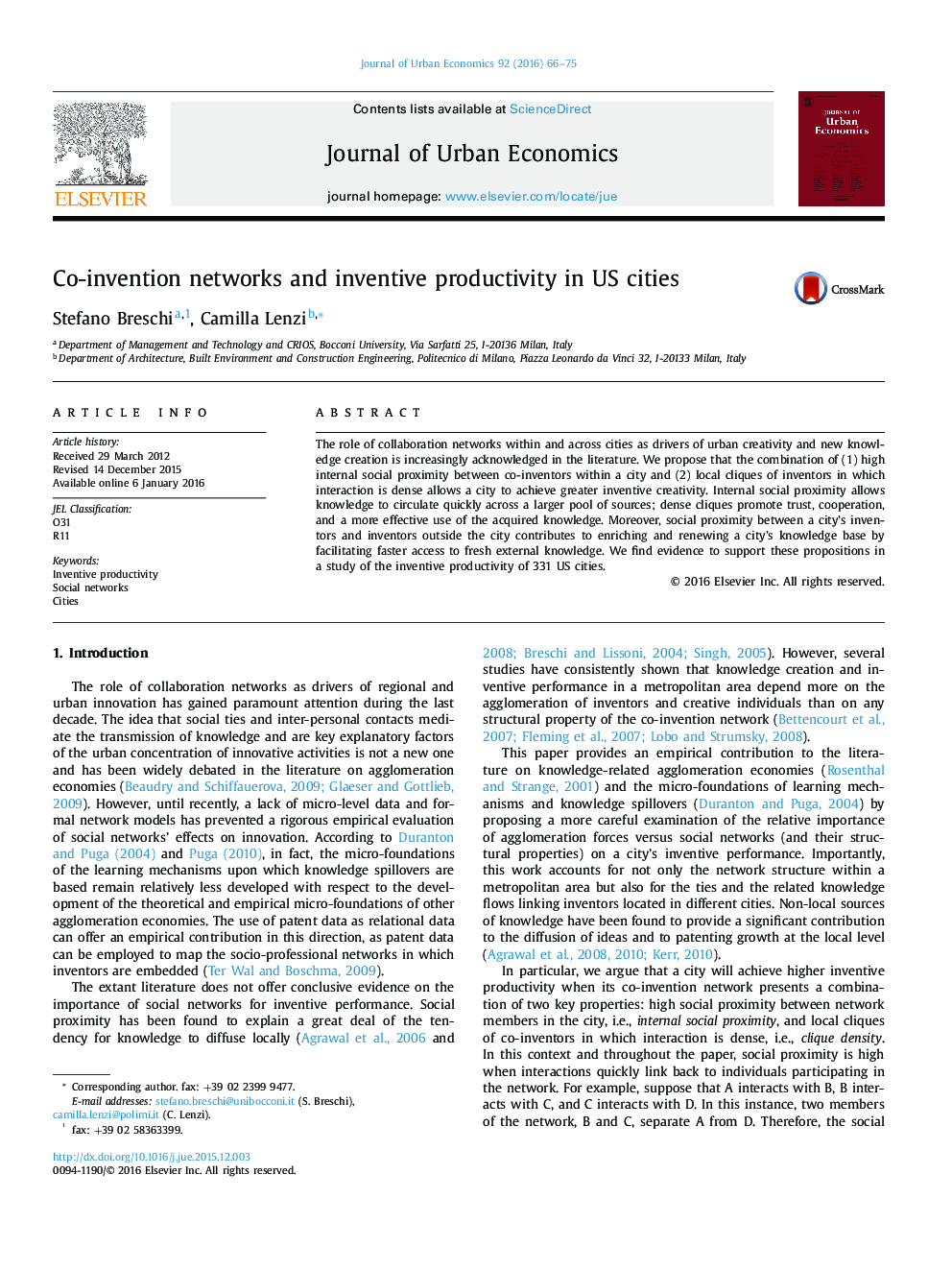| Article ID | Journal | Published Year | Pages | File Type |
|---|---|---|---|---|
| 970604 | Journal of Urban Economics | 2016 | 10 Pages |
The role of collaboration networks within and across cities as drivers of urban creativity and new knowledge creation is increasingly acknowledged in the literature. We propose that the combination of (1) high internal social proximity between co-inventors within a city and (2) local cliques of inventors in which interaction is dense allows a city to achieve greater inventive creativity. Internal social proximity allows knowledge to circulate quickly across a larger pool of sources; dense cliques promote trust, cooperation, and a more effective use of the acquired knowledge. Moreover, social proximity between a city's inventors and inventors outside the city contributes to enriching and renewing a city's knowledge base by facilitating faster access to fresh external knowledge. We find evidence to support these propositions in a study of the inventive productivity of 331 US cities.
